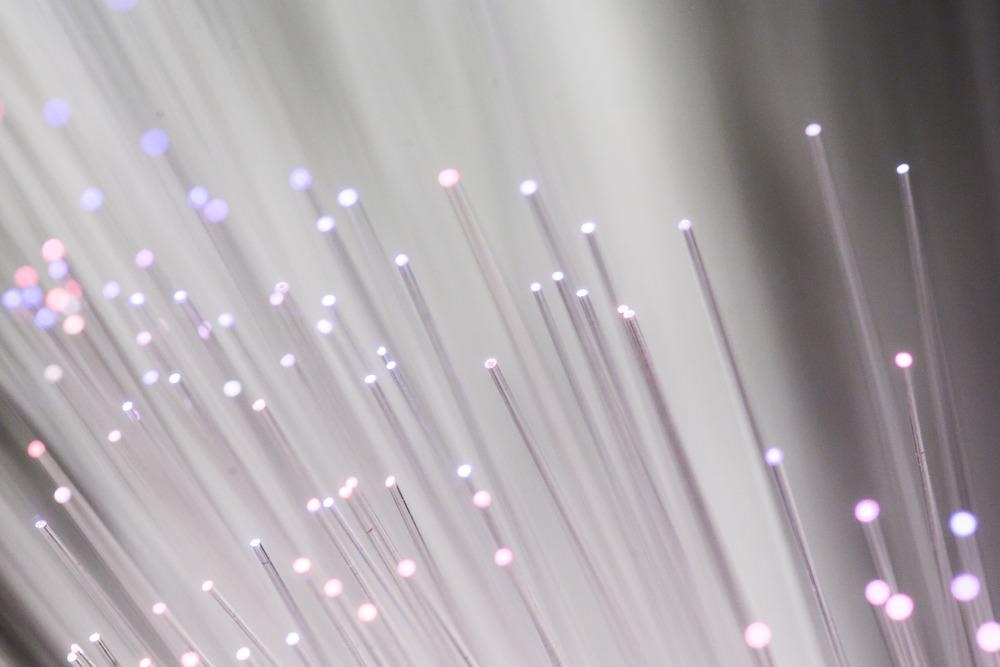
Image Credit: Jamen Percy/Shutterstock.com
Optical fiber nanotechnology integrated with power communication systems has significantly improved these networks' sustained operation worldwide.
Introduction
As technology continues to advance, there has been an increase in electric power communication method diversity. As compared to alternative communication technologies, optical fiber communication technology has good transmission quality, a large transmission capacity, and can relay signals over significantly long distances.
Additional advantages of optical fiber communication technology include anti-electromagnetic interference, high voltage, and large currents. The incorporation of optical fiber communication technology into modern PLC systems has been on the rise.
Optical Fibers in Communication Systems
The primary function of power lines is to deliver electrical power, which can be in the form of alternating currents (AC) or direct currents (DC), from the energy generation plants to the consumer.
Modern power line communication (PLC) systems allow data to be transmitted over power lines through existing electrical power systems. Furthermore, PLC systems ensure the safe and stable operation of power systems and the communication and control systems responsible for electric power transmission and communication.
In the modern world, all aspects of people’s daily lives are almost entirely dependent on electric energy. Therefore, having a reliable PLC system is extremely important. To this end, optical fibers have often been employed for communication systems, including, but not limited to, wireless, digital subscriber lines, and satellite communication systems.
One of the most significant advantages of optical fibers is their ability to provide tight spatial confinement of only several tens of micrometers. As a result of this reduction in space, multiple independent channels with a higher spatial density can be employed.
Silicon Dioxide in Optical Fiber Communication
Nobel Prize winner in Physics Charles Kao was one of the first individuals to suggest using silica-based optical fibers as data carriers within power communication systems.
Since this initial announcement, research has found that fused-silica optical fibers reduce extrinsic absorption and intrinsic loss, both of which increase the transparency of the wires to make them comparable to glass optical fibers, which were the previous fiber material of choice.
The primary material used for optical fiber communication systems is silicon dioxide (SiO2). In addition to reducing the losses that can occur within optical-electronic relay devices throughout the communication system, SiO2 is also considered a more sustainable material, reducing the risk of exasperating air pollution issues.
SiO2 is also an inert material, which prevents its susceptibility to potentially electromagnetic interferences. Taken together, these properties of silica materials like SiO2 have led to its use through a worldwide network of optical fiber networks.
In addition to these characteristics, fused-silica optical fibers are also unique in exhibiting the optical Kerr effect. The Kerr effect, a nonlinear phenomenon that introduces alterations in the fiber that improves its signal power, has subsequently increased the amount of information transmitted through these silica-based fibers.
Nanotechnology for Optical Fibers
Silica-based optical fibers offer a wide range of advantages for both transmission fibers and fiber amplifiers used in telecommunication systems.
Despite their advantageous properties for these applications, silica glass is considered to be less efficient compared to other types of glass, especially in applications that involve rare earth and transitional metal luminescent ions.
To overcome these limitations, silica-based optical fibers that contain nanoparticles have been investigated. Oxyfluoride optical fibers containing silver nanoparticles (AgNPs), for example, have been proposed. By offering a new light source at a wavelength of 650 nanometers (nm), this novel fiber material has been found to generate a resonant excitation of conducting electrons by confining them at the interface between the metal and dielectric surfaces. As a result, a localized plasmonic mode is created, which subsequently increases the linear optical response.
Conclusion
Additional limitations often encountered with silica glass optical fibers, such as gain bandwidth, luminescence efficiency, and non-linearity, can potentially be corrected with a new generation of optical fibers with a nanoparticle-based core.
Although many of the studies investigating the potential of these materials are still in the early stages of their development, data has pointed to the benefits achieved when nanoparticles are incorporated into fibers.
Therefore, professionals in the field anticipate that as the technology continues to develop over the next several years, there will subsequently be an emergence of various new components based on these types of optical fiber nanotechnologies.
References and Further Reading
Yu, H., Li, P., Zhang, L., et al. (2020) Application of optical fiber nanotechnology in power communication transmission. Alexandria Engineering Journal 59(6); 5019-5030. doi:10.1016/j.aej.2020.09.025.
Kabalci, E., & Kabalci, Y. (2019) Chapter 4 – Power line communication technologies in smart grids. From Smart Grid to Internet of Energy; 119-171. doi:10.1016/B978-0-12-819710-3-00004-1.
DiGiovanni, D. J., Li, M., & Willner, A. E. (2013) Fiber optic nanotechnology: a new frontier of fiber optics. De Gruyter. doi:10.1515/nonph-2013-0053.
Essiambre, R. et al. (2013). Chapter 1 – Fiber nonlinearity and Capacity: Single-Mode and Multimode Fibers. Optical Fiber Telecommunications; 1-43. doi:10.1016/B978-0-12-396960-6.00001-8.
Blanc, W., & Dussardier, B. Formation and applications of nanoparticles in silica optical fibers [Online]. Available from: https://arxiv.org/pdf/1510.02611.pdf.
Disclaimer: The views expressed here are those of the author expressed in their private capacity and do not necessarily represent the views of AZoM.com Limited T/A AZoNetwork the owner and operator of this website. This disclaimer forms part of the Terms and conditions of use of this website.